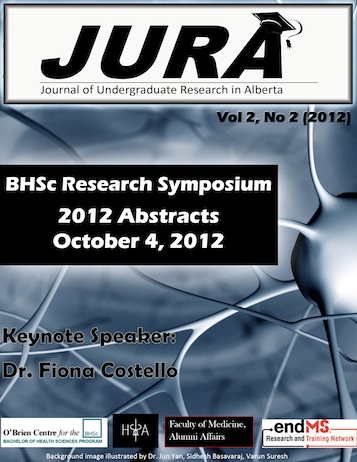Evolution of HIV-1 in the Gut
Keywords:
HIV, HIV-1, HIV/AIDS, gastrointestinal tractAbstract
The high mutation rate of Human Immunodeficiency Virus (HIV) is a significant contributor to its ability to develop drug resistance. While much research has been directed towards developing new drugs and treatments in response to resistance, it is also critical to gain a better understanding of the nature of the virus’s replication. Previous studies (van Marle et al., 2007; van Marle et al., 2010) have demonstrated that viral replication and evolution are compartmentalized in different gut tissues. However, these studies focused on the reverse transcriptase (rt) region of the proviral DNA. This project examined whether the same patterns of viral evolution would be found in the nef (negative factor) encoding region. The Nef protein contributes to the infectivity and pathogenicity of the virus and is therefore under different selection pressures than reverse transcriptase.
For this project, gut biopsy samples were taken from a patient cohort at the Southern Alberta HIV Clinic from 1993-1996 and again from 2007-2010. Proviral DNA was isolated and the nef region was subsequently sequenced and analyzed using Molecular Evolutionary Genetic Analysis (MEGA) software. The results indicated that evolution of the nef region over time is consistent with compartmentalization of the gut in each patient. Overall diversity of the Nef protein encoding region is similar among all tissue types. Finally, the majority of mutations suggest that HIV-1 is under neutral or purifying selection. These observations are consistent with the observations of the rt region, suggesting a similar evolutionary pattern for the nef region.
Downloads
References
van Marle, G., Church, D.L., Nunweiler, K.D., Cannon, K., Wainberg, M.A., Gill, M.J. (2010) Retrovirology, 7(74).
Published
Issue
Section
License
Authors retain all rights to their research work. Articles may be submitted to and accepted in other journals subsequent to publishing in JURA. Our only condition is that articles cannot be used in another undergraduate journal. Authors must be aware, however, that professional journals may refuse articles submitted or accepted elsewhere—JURA included.


